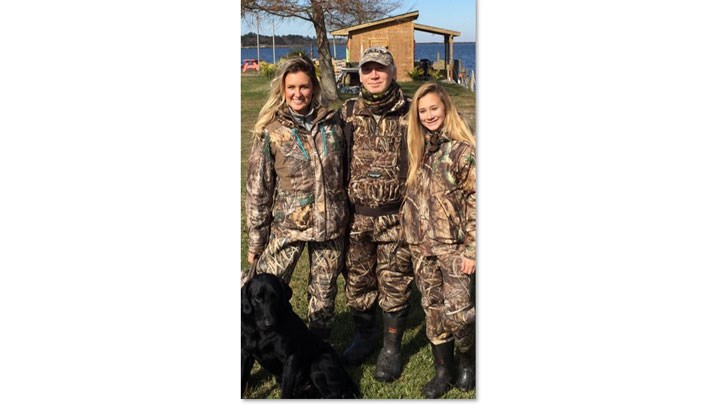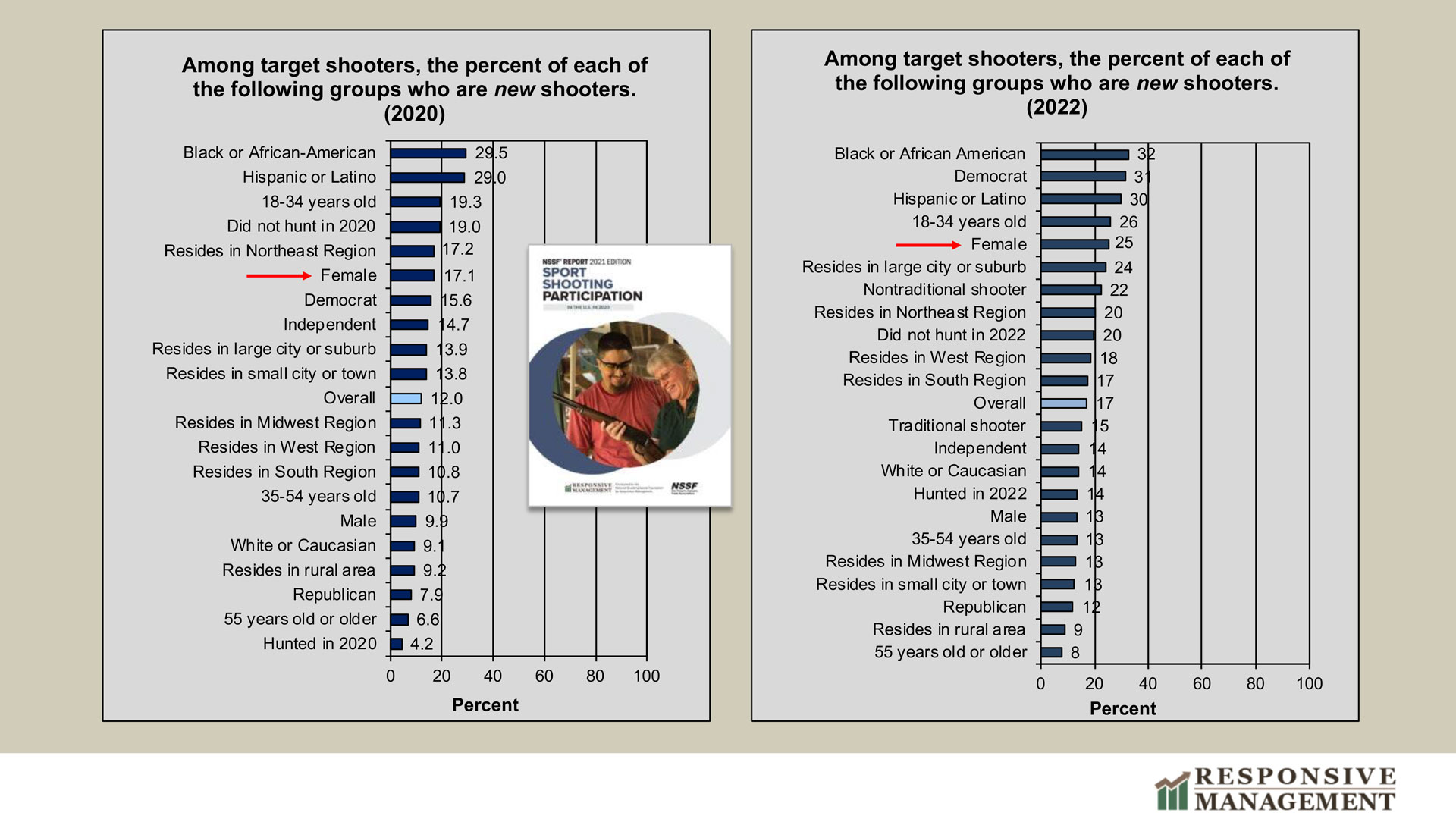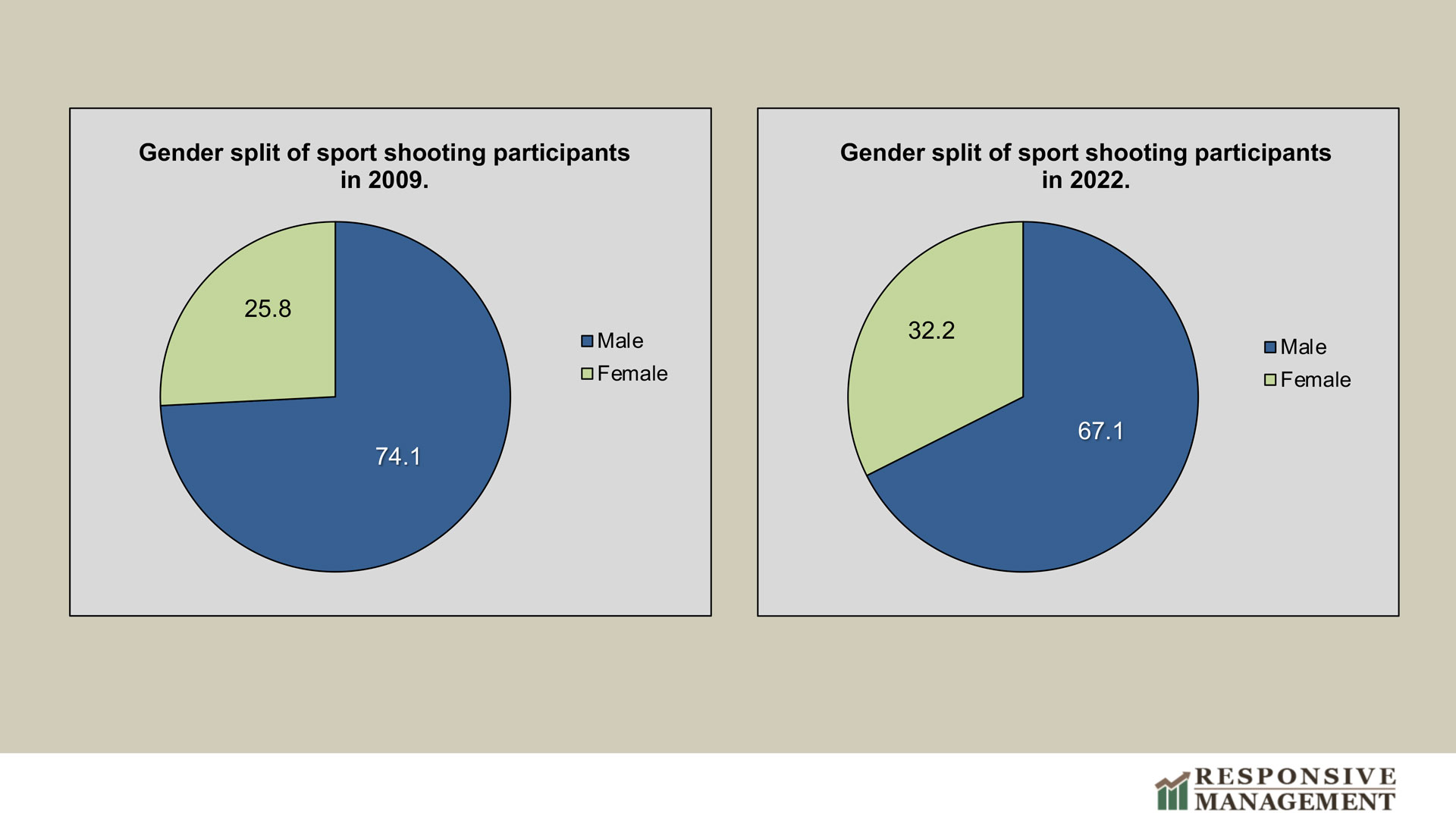
by Mark Damian Duda, Executive Director, Responsive Management - Thursday, June 8, 2023

You see the trend everywhere. In hunter education classes, on the shooting range and in the field during hunting season—you see it in the clothing section of your favorite sporting goods store. There are more women participating in hunting and recreational shooting.
While the press in recent years has picked up on the trend, female participation in hunting has been increasing for some time. We first picked up this trend in the early 1990s when examining hunting participation in the previous decade as measured by the National Survey of Fishing, Hunting and Wildlife-Associated Recreation. The “National Survey,” as it is often called by wildlife professionals, is a major participation and expenditure study sponsored by the U.S. Fish and Wildlife Service (USFWS). Since 1955, the National Survey has been conducted roughly every five years. Our analysis found that during the 1980s, participation in hunting among men was decreasing while participation among women was increasing. This marked the beginning of the trend.
Interestingly, while we were able to statistically correlate shifting participation in hunting among men with specific demographic changes taking place across America (for example, an aging male population and a decline in the percentage of men living in rural areas), we could not find any similar statistical relationships explaining the gains in hunting among women. Our conclusion? Sweeping cultural and attitudinal changes at the time were making it increasingly acceptable for women to take part in traditionally male activities, with hunting being one of them. While the numbers were still small as a proportion of the overall hunting population, the percentage of female hunters almost doubled between 1980 and 1990. This growth was even more dramatic when compared to the 16 percent decline in men’s participation in hunting over the same period.
Explaining why certain underrepresented groups don’t participate in hunting and fishing as much as traditional participants, a woman in a focus group years ago told me, “You buy things that look like you.” And through the years, as more women have started to hunt, others have followed suit. The early female hunters served as role models who paved the way for other women interested in learning to hunt. Today, 10 to 15 percent of all hunters are women.
Women also have started to go sport shooting in significant numbers. While there is less historical trend data available for sport shooting participation than there is for hunting, my company, Responsive Management, has conducted a biennial survey on sport shooting participation for the National Shooting Sports Foundation (NSSF) since 2008. The timing of the first survey was notable, as it followed a surge in firearm purchases and shooting participation among Americans. We’ve learned a lot about gun ownership and sport shooting since then. For example, we know that between 42 and 45 percent of U.S. households have a firearm. (Similar studies by Gallup and Pew Research corroborate these numbers.) We know that between 32 percent and 35 percent of U.S. adults personally own a firearm (again, statistics confirmed by Gallup and Pew). That’s a lot of people who personally own or have access to a firearm. With those numbers in mind, it’s no surprise that upwards of 15 million American women participate in some type of recreational shooting activity today.

Trends studies like the one Responsive Management conducts for NSSF allow us to track changes within the overall population of sport shooters. In 2009, women accounted for 26 percent of all sport shooting participants; in 2022, 32 percent of all sport shooters were women. Our trend survey also looks at new shooters, meaning those who have joined the ranks within the past five years. In the latest survey, the groups most likely to be new sport shooters included black residents, Democrats, Hispanic/Latino residents, 18- to 34-year-olds and women—nontraditional participants to say the least. Among this cohort of new sport shooters specifically, women have increased from 17 percent in 2020 to 25 percent in 2022.

While more women are trying hunting and sport shooting, they are also leaving the activities in higher-than-average numbers; women also tend to be less avid when they participate. In a recent study on hunter avidity that Responsive Management conducted for the Sportsman’s Alliance under a grant from the USFWS, we looked at hunting license purchases in a number of states over a five-year period. We found dramatic differences in the rates of license purchases among men and women. On average, 51 percent of women purchased a license only once over a five-year time frame. In some states, only about 10 percent of women could be considered avid, meaning they purchased a license four or five years in that five-year period.
One of the more stunning findings was in Maine, where the gender gap in license purchases was nearly even: 32 percent of women were avid license purchasers compared to 39 percent of men over the same period. I don’t think it’s a coincidence that the Maine Department of Inland Fisheries and Wildlife has developed innovative messaging and programs for women—and is currently led by its first-ever female commissioner, Judy Camuso. You buy things that look like you.
Overall, though, the picture is clear: While many women are giving hunting and sport shooting a try, too many are dropping out, showing that the challenge is less about recruitment and more about retention.
Over the past several years I have worked on multiple projects exploring female participation in hunting and shooting. One major project was conducted in partnership with Holly Heyser of the California Waterfowl Association and Christine Thomas, Dean Emerita of the College of Natural Resources at the University of Wisconsin-Stevens Point and a founder of the Becoming an Outdoors-Woman program. That project was implemented to better understand the retention issue of female hunters and shooters. The far-reaching effort included numerous focus groups and scientific surveys with more than 10,000 women across the United States. Our conclusion was clear: The profession needs to retain more of these participants. To do so, we identified eight key strategies:
There is no reason why female participation in hunting and sport shooting cannot continue to increase. The interest among women is there; now it is time for the profession to help create the conditions to solidify women’s involvement in these activities.
E-mail your comments/questions about this site to:
[email protected]
Proudly supported by The NRA Foundation and Friends of NRA fundraising.
